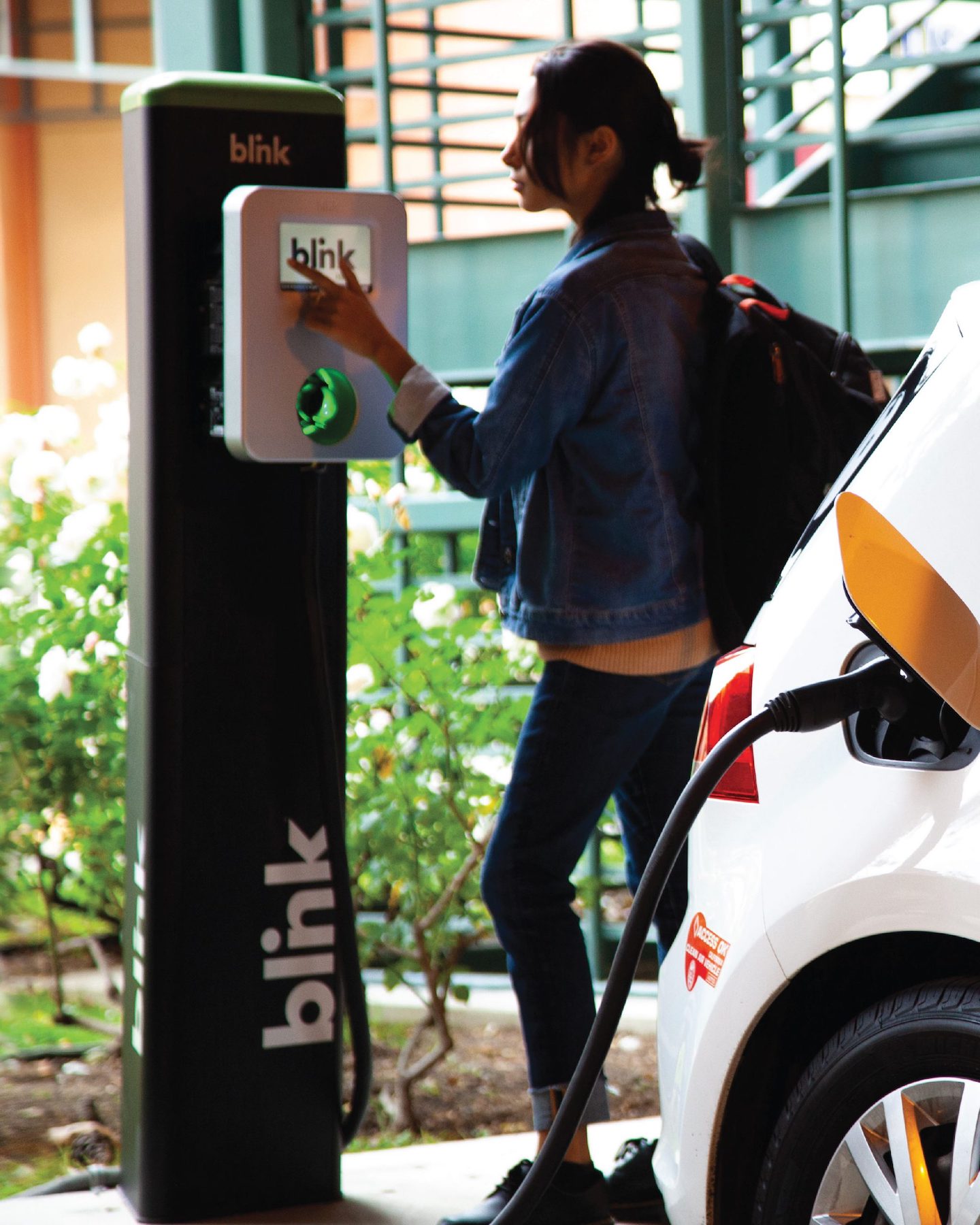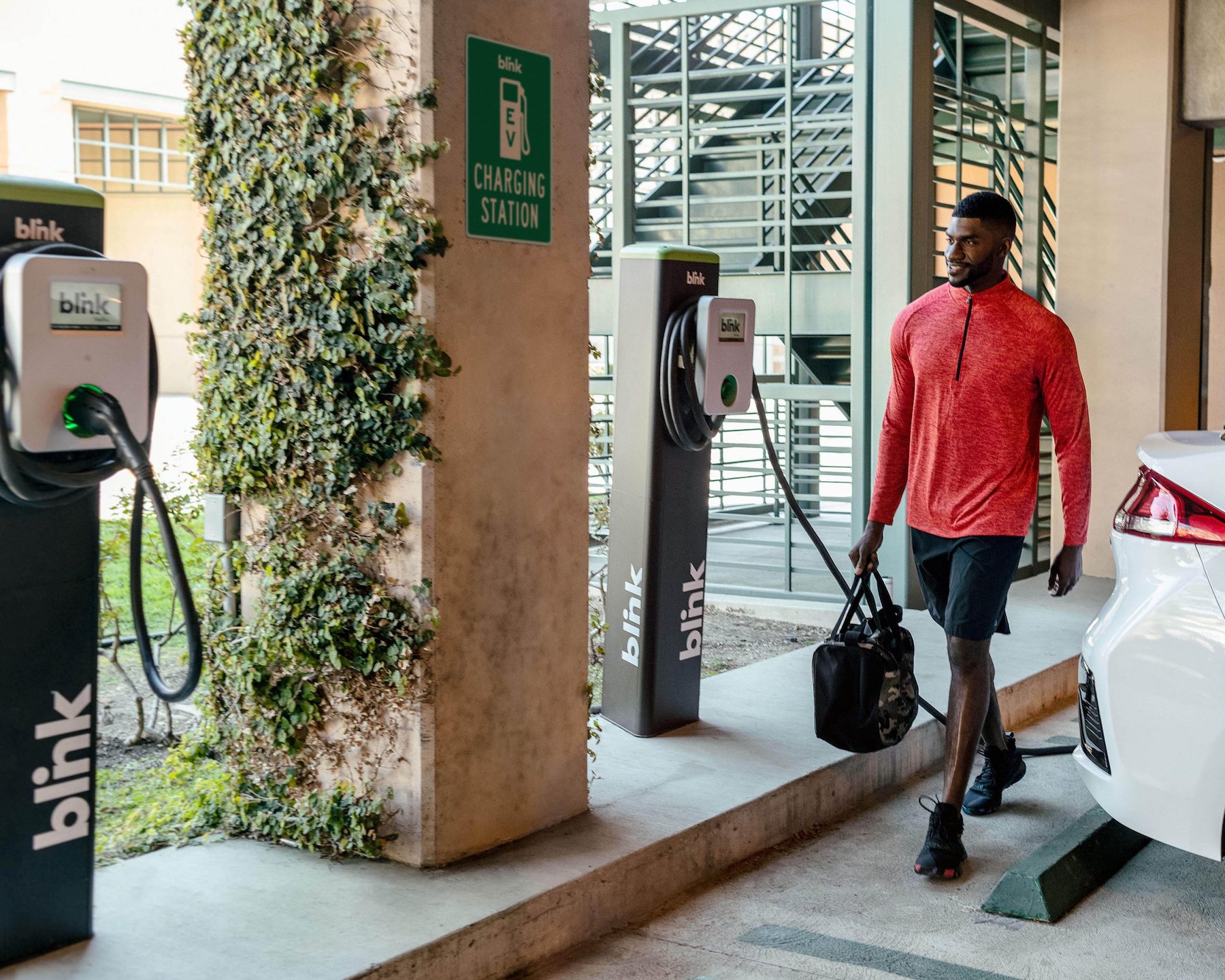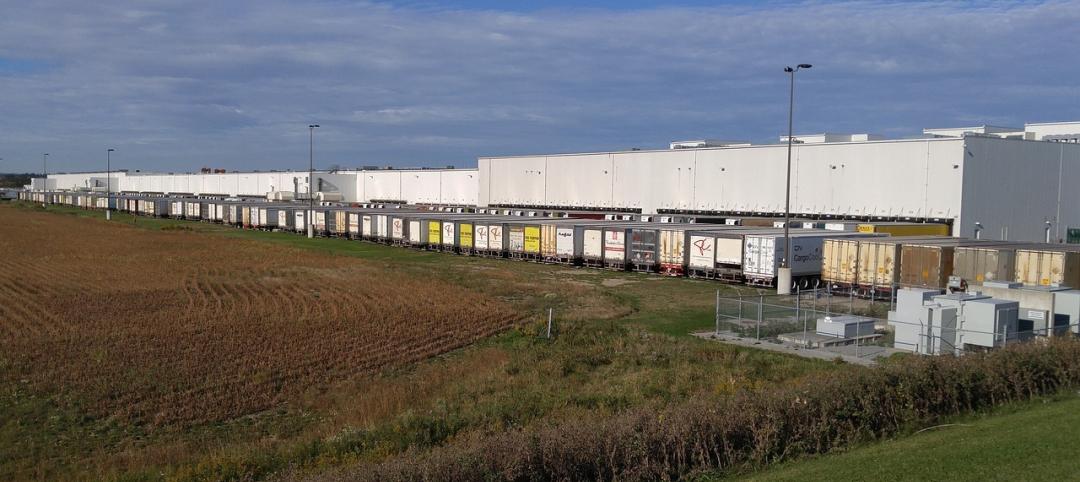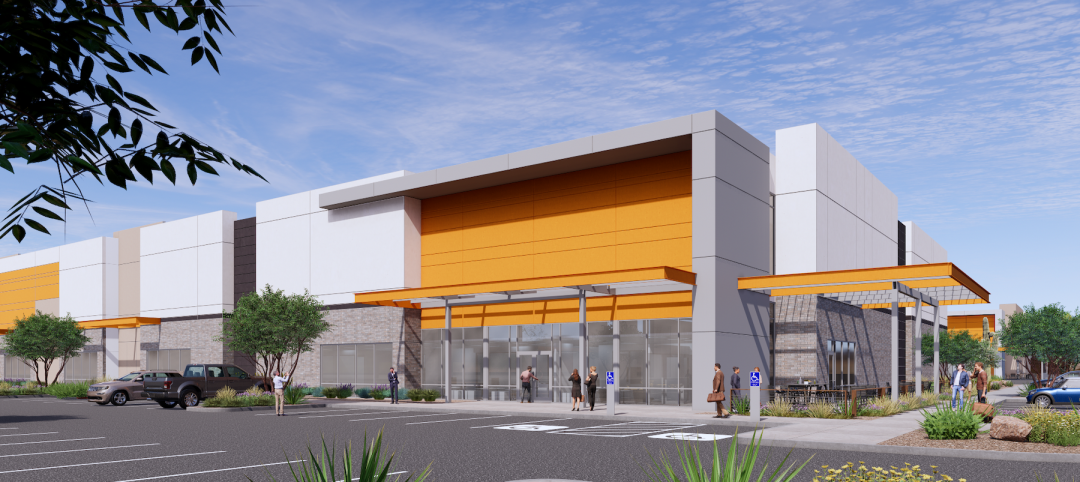Despite the recent decisions by leading automakers, in response to demand shifts, to temporarily slow their production of electric vehicles, the federal government remains committed to the electrification of transportation, and some AEC firms have been exploring avenues to capitalize on this market sector’s expansion.
Through the first half of 2023, sales of electric vehicles in the U.S. rose by 49 percent compared to the same period a year earlier. But that increase compared unfavorably to the 63% gain in calendar year 2022. Carmakers like Ford, General Motors, and Tesla have announced they were curtailing or delaying production of certain EV models during this period of what one sector analyst referred to as “growing pains.”
This market’s perceived uncertainty hasn’t tempered the Biden Administration’s support of electric vehicles as part of its larger strategy to reduce carbon emissions. The White House foresees a national network of 500,000 EV chargers nationwide, in anticipation that electric vehicle sales will rise to at least half of all new car purchases by 2030. Year-to-date EV sales through September reached just over 873,000 and were on track this month to surpass 1 million units for a year for the first time ever.
Some AEC firms are jumping on this bandwagon proactively.
Full service charging stations, in design and construction
The engineering firm Kimley-Horn recently launched TREDLite EV, a software solution for retail chains and local governments to select the best locations for their new EV chargers. Kimley-Horn also partnered with Drive Electric Tennessee, an awareness and implementation program that in September released its “Multifamily Electric Vehicle Charging Infrastructure Guide,” for developers and occupants who wish to install chargers.
Driver SPG, a division of the general contractor C.W. Driver Companies, is building what will be the first full-service electric vehicle charging station for Rove Charging, which plans to open 20 locations by 2026. The first station, on 1.2 acres in Santa Ana, Calif., is slated to open next summer. Designed by Peruzzi Architects, the station will be able to recharge 40 vehicles simultaneously via high-powered fast chargers. The station will include an on-site market operated by Gelson’s Markets, restrooms, and free Wi-Fi for customers who use the station’s lounge and outdoor patio. Some Rove stations will offer a car wash.

The Santa Ana station will be able to generate renewable energy through on-site solar panels and battery storage that supplements the city’s electric grid.
Last month, The Chicago Athenaeum and The European Center for Architecture Art Design and Urban Studies bestowed its International Architecture Award on The Sunflower Station, an EV station of the future designed by Beijing-based Sanyou Architectural Design and commissioned by the fuel distributor and retailer Parkland Corporation, which is based in oil-rich Calgary, Alberta, and has operations in 25 countries. This station design—which reimagines a typical highway gas station as a recharging oasis—has 24 EV charging spaces, and other areas where drivers and passengers can rest, watch movies, or meditate. The design also featues solar panels and a rainwater collection system.
Recharging everywhere
The number of EV chargers continues to proliferate. Earlier this month, EVgo, one of the nation’s largest public fast-charging networks, revealed that it would start using a prefabricated approach that cuts the install time for fast chargers in half and reduces construction costs by an average of 15 percent.
EV chargers in general are more likely to be installed in parking lots of shopping centers than within dedicated standalone structures a la gas stations. An EV station concept study that Gensler and BMW Designworks conducted a few years ago has yet to find a willing adopter, confirms a Gensler spokesperson. The developers behind the Stack Charge EV station concept, who previously stated their plans to open 10 stations in Southern California by the end of 2023, now say their first station with 40 fast chargers, in Baker, Calif., between Los Angeles and Las Vegas, will open early next year.
“As the country transitions to electric vehicles, it is moving to a distributed fueling model, where a vehicle can be recharged at the gym, at the supermarket, or on roadways like gas stations,” says Mike Battaglia, COO of Blink Charging, one of the country’s leading EV charging providers, with more than 3,500 charging locations and nearly 12,000 connectors.
He says that Tesla has done a good job expanding its network of supercharging stations, of which it has nearly 2,000 with close to 22,000 supercharger ports, according to Department of Energy estimates. But Battaglia cautions that DC fast charging stations are expensive, which makes calculating the return on investment for such projects dicier.
While Blink also wants a bigger piece of the fast-charger pie, it is targeting the multifamily sector for installation of level 2 charging equipment, whose cost is a fraction of DC fast chargers, and offers higher-rate AC charging through 240-volt electrical service for residential applications, and 208-volt service for commercial applications. Level 2 chargers can charge an EV to 80 percent from empty in four to 10 hours, and a plug-in hybrid in one to two hours, according to the U.S. Department of Transportation estimates.
Citing research by McKinsey and other sources, Battaglia says that, despite all the media hype around fast chargers, 90 percent of all kilowatt hours of electricity dispensed for EV charging will come through level 2 equipment. And more multifamily developers are interested in installing EV chargers as a competitive amenity that meets growing tenant demand.
For multifamily clients, Blink conducts a site assessment to determine the number of stations needed and whether the building has sufficient electrical service. Battaglia says that, on average, a multifamily complex would require one charger per five to seven EVs on site. Level 2 charging equipment costs between $5,000 and $6,000 per unit, and another $8,000 and $20,000 to install.
The biggest driver of cost is the distance separating the building’s electrical panel from its bank of EV chargers. That’s why Blink advises its multifamily clients, when choosing the location for chargers, to plan ahead for the likelihood of increased demand. Blink will soon offer a dual-point charging station that can recharge any electric vehicle including Tesla’s, whose charging standard has been embraced by several carmakers.

Production slowdown an aberration
The publicly owned Blink Charging reported a 151 percent increase in revenue, to $97.9 million, for the nine months ending September 30. The company expects to be earnings-per-share positive by December 2024, says Battaglia.
Blink recently signed a seven-year agreement to become the official EV charging provider for the city of Miami Beach, its headquarters city. Blink is also partnering with the connected car and parking service provider Parkopedia to integrate more than 4,000 EV chargers onto Parkopedia’s platform in North America, giving its subscribers access to Blink’s charger network. Blink’s products are now prioritized by the state of Utah for government, nonprofit, K-12, and higher education agencies. The company is also the EV charging supplier for the Tennessee Valley Authority to provide charging solutions for public and commercial fleet applications.
Blink emphasizes its flexibility. It will be adopting Tesla’s charging standard and incorporating plug-and-charge technology that simplifies the payment process for EV drivers. Blink also provides energy management services.
Battaglia isn’t too worried about slowdowns in EV production, which he sees as a temporary aberration. “Look, electric vehicles are now 7.7 percent of car sales, and were 25 percent [of sales] in California” in the first half of 2023. “We never thought this was going to be a linear rocket ship.”
Related Stories
Data Centers | Oct 1, 2024
10 biggest impacts to the data center market in 2024–2025
While AI sends the data center market into the stratosphere, the sector’s accelerated growth remains impacted by speed-to-market demands, supply chain issues, and design innovation necessities.
Warehouses | Sep 27, 2024
California bill would limit where distribution centers can be built
A bill that passed the California legislature would limit where distribution centers can be located and impose other rules aimed at reducing air pollution and traffic. Assembly Bill 98 would tighten building standards for new warehouses and ban heavy diesel truck traffic next to sensitive sites including homes, schools, parks and nursing homes.
The Changing Built Environment | Sep 23, 2024
Half-century real estate data shows top cities for multifamily housing, self-storage, and more
Research platform StorageCafe has conducted an analysis of U.S. real estate activity from 1980 to 2023, focusing on six major sectors: single-family, multifamily, industrial, office, retail, and self-storage.
Codes and Standards | Sep 3, 2024
Atlanta aims to crack down on blighted properties with new tax
A new Atlanta law is intended to crack down on absentee landlords including commercial property owners and clean up neglected properties. The “Blight Tax” allows city officials to put levies on blighted property owners up to 25 times higher than current millage rates.
Industrial Facilities | Aug 28, 2024
UK-based tire company plans to build the first carbon-neutral tire factory in the U.S.
ENSO, a U.K.-based company that makes tires for electric vehicles, has announced plans to build the first carbon-neutral tire factory in the U.S. The $500 million ENSO technology campus will be powered entirely by renewable energy. The first-of-its-kind tire factory aims to be carbon neutral without purchased offsets, using carbon-neutral raw materials and building materials.
Industrial Facilities | Jul 24, 2024
Industrial construction slows, but demand remains strong
California and Arizona remain the most sought-after markets for development and operations, says CommercialEdge’s latest report.
Great Solutions | Jul 23, 2024
41 Great Solutions for architects, engineers, and contractors
AI ChatBots, ambient computing, floating MRIs, low-carbon cement, sunshine on demand, next-generation top-down construction. These and 35 other innovations make up our 2024 Great Solutions Report, which highlights fresh ideas and innovations from leading architecture, engineering, and construction firms.
Industrial Facilities | Jun 8, 2024
8 ways to cool a factory
Whichever way you look at it—from a workplace wellness point of view or from a competing for talent angle—there are good reasons to explore options for climate control in the factory workplace.
Building Tech | May 21, 2024
In a world first, load-bearing concrete walls built with a 3D printer
A Germany-based construction engineering company says it has constructed the world’s first load-bearing concrete walls built with a 3D printer. Züblin built a new warehouse from a single 3D print for Strabag Baumaschinentechnik International in Stuttgart, Germany using a Putzmeister 3D printer.
Industrial Facilities | May 9, 2024
Another new industrial facility breaks ground in hottest market for this sector
The Brickyards on Ellsworth in Mesa, Ariz., will eventually have eight buildings.

















